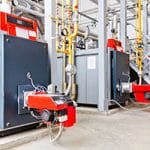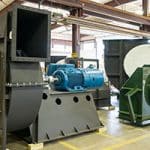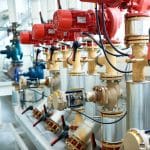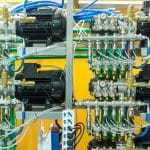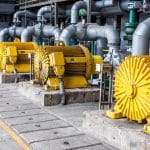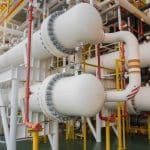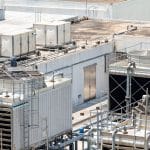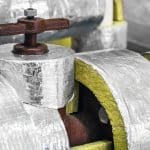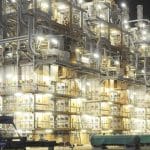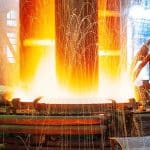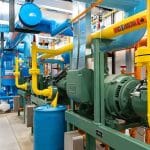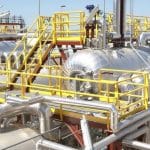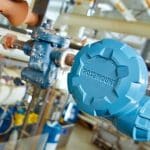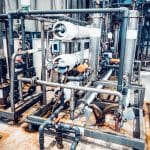The 3 kEys
- Verify that all airflow dampers are functioning correctly ensures that heated air circulates efficiently, rather than escaping and wasting energy.
- Checking and recalibrating temperature and humidity sensors is critical for efficiency, as inaccurate readings can lead to overheating or prolonged drying times, both of which waste energy.
- Conducting infrared scans of electrical connections can help detect heat imbalances that indicate potential failure points or inefficiencies in the power supply system.
Industrial dryers are essential in manufacturing, food processing, textiles, and many other industries where moisture control is critical. But these machines are also among the most energy-intensive pieces of equipment in a facility.
When poorly maintained, dryers can consume excessive amounts of energy, increase operational costs, and reduce overall production efficiency. The good news is that with a well-structured preventive maintenance program, Facilities Managers can significantly enhance energy efficiency and reduce unnecessary power consumption.
By focusing on routine maintenance and best practices, organizations can ensure dryers operate at peak performance, extending equipment lifespan and reducing costly downtime. And a properly maintained dryer ensures product quality as well.
Weekly Maintenance: Addressing Immediate Efficiency Concerns
Each week, Facilities Managers and maintenance teams should perform essential checks to keep dryers running smoothly. The accumulation of particulates in the dryer’s air system can obstruct airflow, forcing the machine to work harder and consume more energy. Regular cleaning of filters, ducts, and exhaust vents ensures proper airflow and helps maintain consistent drying performance.
It’s essential to inspect the integrity of gaskets and seals on doors and access panels, as any leaks can lead to heat loss and increased drying times.
Inspecting belts and pulleys for signs of wear can prevent mechanical failures that cause inefficiencies and increase power consumption. Loose or frayed belts reduce the efficiency of the blower system and can lead to overheating of the motor, contributing to unnecessary energy expenditure.
In addition, verifying that all airflow dampers are functioning correctly ensures that heated air circulates efficiently, rather than escaping and wasting energy. Operators should also listen for unusual noises such as excessive vibration or whining, as these could indicate underlying mechanical issues that may lead to greater inefficiencies if left unaddressed.
Powering Down on Drying Energy Costs is a good read by Maguire, well worth your time.
Monthly Maintenance: Optimizing Components for Better Performance
On a monthly basis, facilities teams should take a deeper look at the dryer’s components. Checking and recalibrating temperature and humidity sensors is critical for efficiency, as inaccurate readings can lead to overheating or prolonged drying times, both of which waste energy. Sensors should be tested under different operating conditions to ensure they are providing accurate feedback to the control system.
Fans and blowers should be inspected for buildup and wear since inefficient airflow leads to higher energy usage. A thorough cleaning of fan blades and blower housings can prevent imbalance and drag, which could lead to increased power draw. Additionally, checking for loose or misaligned belts in fan assemblies ensures optimal airflow and minimizes strain on the motor.
Lubrication of bearings and moving parts should also be completed monthly to reduce mechanical resistance, preventing excess power draw. Using the correct type of lubricant is critical to ensure smooth operation without excess buildup that could attract dust and debris.
Conducting infrared scans of electrical connections can help detect heat imbalances that indicate potential failure points or inefficiencies in the power supply system. Identifying and tightening any loose electrical connections prevents energy losses caused by resistance heating.
See Casso Solar’s https://www.cassosolartechnologies.com/blog/guidelines-for-maintaining-industrial-drying-systems for their 12-step checklist.
Quarterly Maintenance: Enhancing System Efficiency
Every quarter, more in-depth maintenance tasks should be conducted to optimize the dryer’s performance. Examining and cleaning heating elements or steam coils ensures that heat transfer remains efficient, reducing the time and energy required for drying. Over time, scale and residue can build up on heating elements, diminishing their efficiency and forcing the system to consume more power to achieve the same level of heat output. Performing a deep clean with manufacturer-recommended solutions can restore heating efficiency.
Steam trap inspections in steam-based dryers are necessary to ensure there are no leaks or failures that could lead to energy losses. A malfunctioning steam trap can allow valuable steam to escape, leading to higher energy costs and reduced drying effectiveness. Technicians should also inspect pressure regulators and valves for proper operation, as inconsistencies in steam pressure can lead to uneven drying and excessive energy use.
Inspecting and tightening all air ducts and ventilation systems will prevent air leaks that reduce drying efficiency. If dryers operate in a facility where dust, fibers, or other particulates are prevalent, deep cleaning of the entire air handling system should be performed quarterly to maintain proper airflow and thermal efficiency. Poor duct integrity can lead to conditioned air loss, requiring additional heating or drying cycles to compensate, further increasing energy costs.
Annual Maintenance: Extending Equipment Lifespan and Performance
Once a year, a full-scale inspection and maintenance overhaul should be conducted. A complete system calibration should be performed, ensuring that all control settings, sensors, and thermostats are aligned with the optimal drying parameters. Inaccurate thermostat settings can cause the system to overheat, consuming more energy than necessary and leading to material degradation or safety hazards.
Heat exchangers should be descaled and inspected for corrosion to maintain effective heat transfer. Scale buildup reduces heat exchanger efficiency, forcing the dryer to operate longer and use more energy to achieve the same drying effect. Facilities should consider using chemical descalers or mechanical cleaning methods recommended by the equipment manufacturer.
Motors and drives should be examined for efficiency losses, with worn components replaced as needed. Variable frequency drives (VFDs) should be assessed to ensure they are functioning correctly, as improper operation can lead to excessive energy consumption. If the dryer system does not yet employ a VFD, facilities may want to consider retrofitting one to optimize energy use.
Conducting an energy audit of the dryer system as part of the annual review can provide valuable insights into areas for improvement, whether through upgraded insulation, improved controls, or retrofitting components for better energy efficiency. Annual audits can also identify trends in energy consumption that point to previously unnoticed inefficiencies or degradation in performance over time.
Download Heyl Patterson’s Recordkeeping and Effective Dryer Maintenance for some assistance.
The Big Finish
Preventive maintenance is one of the most cost-effective ways to enhance the energy efficiency of industrial dryers. By implementing a structured weekly, monthly, quarterly, and annual maintenance plan, Facilities Managers can significantly reduce energy consumption, lower operating costs, and extend the life of these essential machines. A well-maintained dryer not only performs more efficiently but also contributes to overall operational reliability, ensuring that production schedules remain uninterrupted.
By following these best practices and leveraging insights from industry research, Facilities Managers can make meaningful improvements in dryer performance, ensuring both energy efficiency and operational success.




